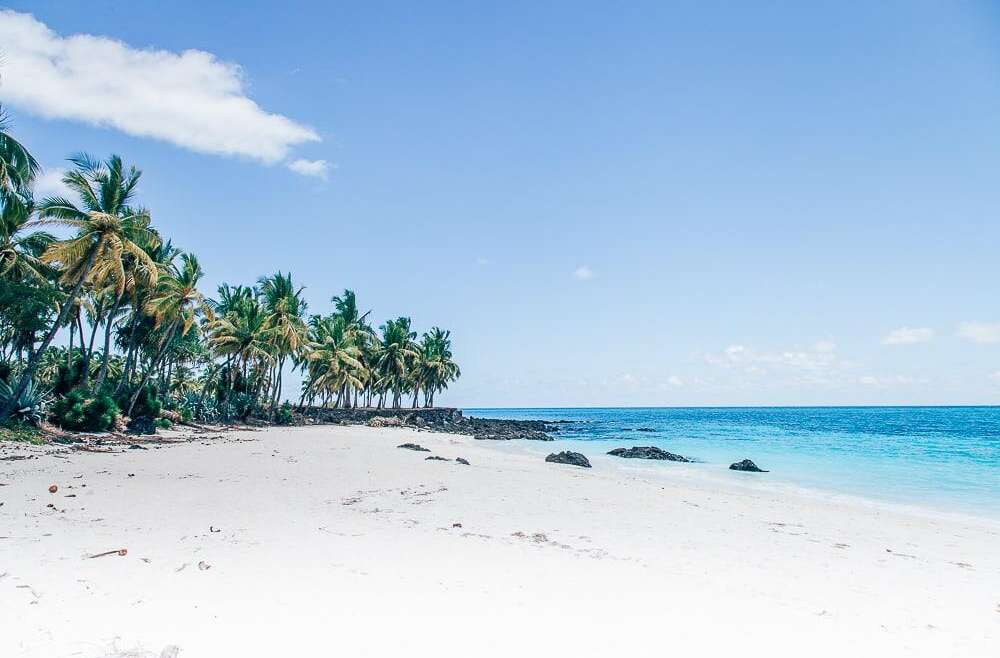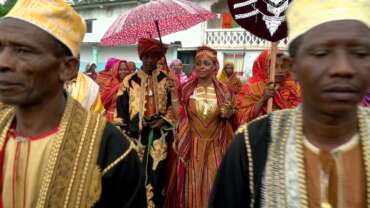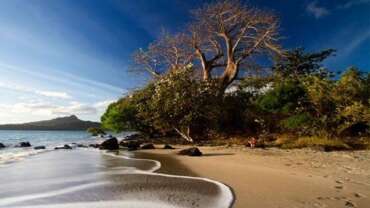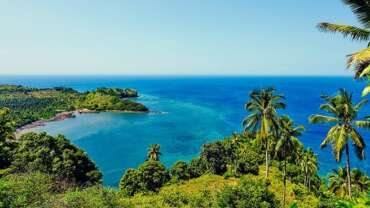Experiences in Comoros
The Comoros Islands, scattered off the coast of Africa in the Indian Ocean, is not your typical destination spot. If you want to drop off the face of the Earth for a bit or if you want outrageous locals to pass the time with then book your flight now. You won’t find the standard hallmarks of tourism here; this is as remote as remote gets.
Those who make it here will tell you it lives up to the paradise hype: banana and palm trees, ylang-ylang, and the scent of cloves on the air. The people are Muslim, with a heavy Swahili influence, and the culture is rather traditional. Meaning that there’s no alcohol and dress is modest. Its odd nickname, Cloud Coup-Coup, comes from its history of over 20 coups since gaining independence in 1975.
There are four developed islands offering white sandy beaches, hiking in rainforests, giant fruit bats, volcanoes, and more. Because there is a lack of tourism infrastructure, don’t expect navigating Comoros to be easy. But there’s a definite exciting unpredictability here and even the most stoic will find themselves feeling adventurous on the islands. Let’s have a look at the best places to visit in Comoros!
Mohéli
Mohéli is the smallest and yet the most fascinating of the Comoros Islands. When people talk about wanting to drop off the face of the Earth, this is the place. There are very few inhabitants on the island and thanks to this it’s largely undeveloped and completely wild. To the point that it’s a little backwards – a bit stuck in the past. You’ll find the country’s only national park here: Parc Marin de Mohéli. Nature lovers will want to check out the craggy islets that dot the island. The locals call it Mwali or Moili and it’s a great place for spotting marine life like sea turtles, whales, and dolphins. There is so much pristine beauty here that visitors don’t usually mind the lack of modern amenities. Mohéli is considered by many to be the highlight of the Comoros Islands.
Fomboni
The largest city on Mohéli is Fomboni, a quiet and unassuming little place. There’s a nameless main street through town, a market, and a jetty worth checking out. The locals here tend to be more reserved than their neighbours on Anjouan and Grande Comore but they’ll give you a friendly welcome for sure. It’s a great place to watch the locals be local and get a sense of what life is like on Mohéli.
Anjouan
The locals call it Ndzouani, and this Comorian island is the stuff that fantasies are made of. Anjouan is nicknamed “The Pearl of the Comoros” because of its Robinson Crusoe qualities. If you want remote, unspoilt, and gorgeous, you’ll find it here. You’ll find old Arab plantations and the scent of cloves and ylang-ylang on every breeze. You’ll find the locals hard-working and intensely proud of their little island. Travel up into the highlands for cooler air and to watch the mists roll across the rainforests.
Grande Comore
At 60km across and 20km wide, Grande Comore is the largest of the Comoros Islands. It’s also the most developed with the most stable economy. One of the most popular towns, Moroni, is located here. As you travel the island you’ll find again and again that the dark and intriguing solidified lava and the contrasting white sand beaches make a stunningly beautiful landscape. Grande Comore is a great spot for honeymooners or couple hoping to get away from their busy lives. Most of population lives on the west coast, but if you travel south you’ll find a lovely agricultural landscape filled with vanilla, coconut, banana, and cassava plantations.
Mount Karthala
The largest active volcano in the world is Mount Karthala located on Grande Comore. It stands at just over 2300 metres and has consistently erupted every 11 years since the beginning of the 19th century. The last eruption was in 2005 and lasted 14 days! The volcano did quite a bit of damage in 2005, but the country has recovered nicely. You’ll love the bizarre yet spectacular landscape that the lava creates and it makes the hiking rather unique. You can climb to the volcano’s rim, but be warned, it’s a difficult two day trek.
Moroni
The capital of Comoros is Moroni, located on Grande Comore Island. There’s a romantic and distinctly Arabian vibe here and you’ll feel like you’re in a different world compared to the rest of the islands. The narrow streets are filled with quaint shops and cafes and the locals wear traditional dress. Enjoy the Volvo Market and pick up some great souvenirs, spices, and handicrafts from local artisans. Check out the medina near the Friday Mosque and get lost in the winding alleyways. Like the rest of the Comoros, there aren’t a lot of traditional tourist attractions, but the beauty always more than makes up for it.
Mayotte
Mayotte is probably the most traditional tourist spot in the Comoros. Still governed by the French, many think that the island is overpriced and out of sync with the remote paradise vibe the rest of the island have. But you’ll find unbelievable turquoise waters, white sand, and top shelf snorkelling, sailing, and diving here. Not surprisingly, there’s a large ex-pat community here and there’s a bit of tension between the Mahorais and the other islanders, but thanks to French rule, there’s a great deal of stability and infrastructure here.
Petite Terre
This is where you’ll find most of the ex-pats in Comoros. The island has two villages: L’Abattoir and Pamandzi. You can visit the volcanic crater of Dziani Dzaha, the rock of Dzaoudzi (a less dramatic version of the Rock of Gibraltar), and the archaeological site known as Bagamayo, where artefacts from a 10th century Shirazi settlement continue to be discovered. It’s a bit high end for budget backpackers, but if you’re able to splurge, you can’t go wrong with the amazing French cuisine that you’ll find on the island – think crab and frog legs!
Mamoudzou
Mamoudzou is where you’ll find the restaurants, businesses, and shopping on Mayotte. It’s a large town and many areas are neglected, but this is still the best place for shopping and eating on the island.
Mt Ntingui
The highest mountain on Anjouan is Mt Ntingui. It stands at almost 1600 metres and it’s a challenging trek to the top. Because of the weather, the peak is often cloud covered, but if you’re one of the lucky ones, and the cloud clears, you’ll get a phenomenal view of the four islands in the archipelago. To reach the top you’ll hike through lush green forest and have a chance to spot some of the exotic bird species here.






